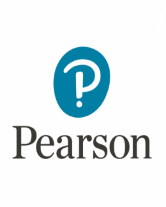Objective
This lesson is designed for third-grade language arts classes beginning to explore the use of dialogue journals or written conversations. In the story, Alexander relates a terrible day he had that made him want to move to Australia. Students of any age will relate to the events that made it a terrible day for Alexander as well as to his conclusion that everyone has bad days...even in Australia.
Students will demonstrate a beginning understanding of how to use dialogue journals or written conversations to express themselves in a written format. Students will identify previous experiences and relate them to the story. They also will have the opportunity to identify key feelings and ideas and express them in a non-threatening written format. Students will have the opportunity to share thoughts, ideas, and feelings with other students and develop a deeper understanding of one another.
Materials
One journal or piece of paper for each student
Book or videotape of Alexander and the Terrible, Horrible, No Good, Very Bad Day by Judith Viorst
Procedure
Demonstration
Ask students if they know what dialogue or conversation is, and accept student responses. Share the definition of dialogue or conversation as "an exchange of ideas or opinions between two people." Tell students that after hearing or viewing a story, they will be having a written conversation with a partner. Explain that this is called a dialogue journal. Demonstrate a dialogue journal or written conversation by writing several simple open-ended questions and ideas on the chalkboard. Call a student to the chalkboard, and ask him or her to respond in writing to your questions and ideas. Do not correct errors in written language. A dialogue journal or written conversation may look something like this:
Teacher: "What did you think about the soil experiment?"
Student: "I was right. The soil slid right off the hill when it got wet."
Teacher: "How did you know it would do that?"
Student: "I don't know. I used to play at the beach when I was little and I guessed that soil would do what sand does when it gets too wet."
Guided Practice
Have students listen to the story or view the video of Alexander and the Terrible, Horrible, No Good, Very Bad Day by Judith Viorst. Allow a few minutes for reflection.
Divide the class into four large groups. If you have an exceptionally large class, more than four large groups may be necessary.
Have students divide into pairs within their groups to begin their dialogue journals or written conversations. Instruct students to open to a blank page in their journal, or provide a blank piece of paper to each student. Have students write about the story by responding to the questions "Have you ever had a day like Alexander's? How did it feel?" Tell students to focus on what they took away from the story as well as their own experiences. Give students approximately three or four minutes to write to their partner.
When time is up, direct students to trade journals or papers, read their partner's comments, and write a response to them. Give students three to four minutes to respond. Repeat twice, depending on time you have allotted.
Sharing Ideas
Have each group share their thoughts between partners. Finally, have each larger group tell the entire class what they discussed, found in common, agreed/disagreed with, and so on. This will enable you to identify common trends and shape future lessons.
Independent Practice
Assign students the question, "Have you ever had a great day that you did not want to end? Tell about that day." If this journal is being completed in class, have partners respond to the dialogue journals as described above. If completed as a take-home assignment, make time over the next two or three days to read each student's journal and respond thoughtfully to it.
Assessment
After this introductory lesson, allow time each day for dialogue journals or written conversations. Collect several journals each day to read and respond to until you have had the chance to review each student's journal. Observe the type of written responses that appear. Are students thinking and reflecting? Use time each day to model the type of thoughtful responses you want to see in students' dialogue journals.




